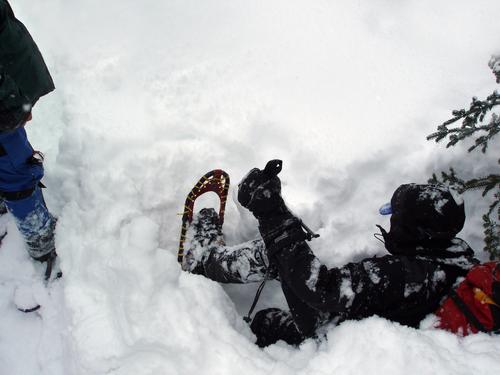I'm personally a little slower than guidebook time, or at least I budget that way.
My rough rule of thumb (summer, reasonably good trail, no special challenges) is "30 minutes to the mile, 40 minutes for every thousand feet of elevation change (up OR down)." Then add time for rock scrambling, stream crossing, bushwhacking, mud, snow, whatever special challenges there might be.
So, "it depends."
A really thick bushwhack might take an hour to go 200 yards.

And I've had it take me 5-6 hours to go 5 miles in this sort of stuff, with four guys taking turns breaking trail, and a couple of switches back and forth between snowshoes/poles and crampons/ice axes. (Then again, I don't think most people on this site hike in that sort of stuff. Maybe one in ten are that crazy?) At least the wind was still that day. The facemasks and goggles could stay in the packs. Which were way too heavy. Winter gear simply is way too heavy, and in deep winter you can't cut corners.





 Reply With Quote
Reply With Quote


 . Agree....I carried my 20lb jack russell out on the CT in July after he trashed his pads....5 miles on top of a frameless pack wasnít fun! Canít imagine making 3 mph....
. Agree....I carried my 20lb jack russell out on the CT in July after he trashed his pads....5 miles on top of a frameless pack wasnít fun! Canít imagine making 3 mph....





